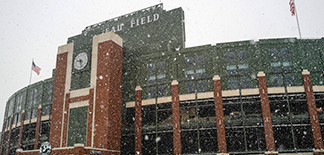Familiarizing yourself with commercial kitchen ventilation certifications, codes, and regulations is important when designing your new commercial kitchen space or updating an existing one. As an operator, understanding the requirements can be confusing and challenging especially since specific regulatory and code requirements vary by project location, equipment used and building type, and may even be specific to the type of cooking you’ll need to accommodate for in your kitchen.
The location of a commercial kitchen can have a significant impact on the codes and regulations that apply to it. For instance, a kitchen in Minnesota might require certain exhaust hoods and fans, while a char-broiler in New York could warrant a pollution control unit installed in the exhaust stream. The goals are safety and consistency when comparing ventilation products made by different manufacturers and ensuring that your equipment meets all building codes and regulations.
Many agencies and third-party organizations exist to regulate and test the performance of ventilation equipment within the commercial kitchen industry. For kitchen ventilation systems, commonly referenced codes and standards are the International Mechanical Code (IMC), International Energy Conservation Code (IECC), International Building Code (IBC), ASHRAE Standard 154, and The National Fire Protection Association Standard 96 (NFPA 96).
Acquiring a fundamental understanding of the most prevalent regulatory and code requirements before and during the design phase of your project can establish a strong foundation for success and ensure your kitchen and dining spaces are safe for both your guests and staff.
Learning International Codes
Of the codes developed by the International Code Council (ICC), the mechanical (IMC), energy conservation (IECC), and building code (IBC) requirements are the most relevant in kitchen exhaust systems.
IMC lays the groundwork for kitchen ventilation systems, with various requirements around hoods and controls, grease duct, exhaust, and supply fans. It also covers the various listings and certifications applicable to kitchen equipment, including UL 705 for grease exhaust fans, UL 8782 for pollution control units, and UL 710 for kitchen exhaust hoods.
IECC establishes the baseline for energy-efficient kitchens and supplements both the Mechanical and Building codes. With exhaust fans, tempered supply units, and high BTU cooking appliances, commercial kitchens consume a significant amount of energy. Airflow reductions are critical towards the development of an energy-efficient building. Accurex DCV controls provide up to a 50% reduction in allowed airflow based on cooking volume – reducing energy usage and saving on fan sizes.
IBC provides further guidance on fire suppression systems and additional demands for specific building types. One key component of this code defines the criteria by which buildings and structures are classified into use groups and occupancies, which are then referenced further within the IBC and other international code bodies. The IBC, along with the International Fire Code (IFC), outline requirements for fire suppression systems within kitchen systems, including the need for a manual actuation device and a UL 300 listing.
Recognizing ASHRAE 154 and NFPA 96 Standards
While the International and Unform Code bodies are codes, ASHRAE 154 and NFPA 96 are standards and cover specificities within their respective subjects.
ASHRAE 154 is specifically focused on kitchen ventilation, diving deeper into certain cooking appliances and hood requirements, and is a suitable alternative to IMC specifications. While not as widely utilized as the IMC, certain jurisdictions, including the state of Minnesota, utilize this standard as the basis for kitchen exhaust requirements.
Similar to how ASHRAE 154 expounds further on kitchen ventilation, NFPA 96 greatly expands upon fire protection within commercial cooking and is considered by many to supersede the above-mentioned codes. It defines various clearance requirements, from duct and hood surfaces to combustible surfaces, as well as clearance around exhaust terminations and air intakes. It provides procedures for the inspection, testing and maintenance of ventilation and fire suppression equipment, and specifies how an exhaust system should operate in a fire, including the requirement for all fuel sources and make-up air sources to shut off. With its highly in-depth regulations and focus on fire safety, NFPA 96 is widely enforced and even referenced within the International Codes.
Why Experience with Codes, Regulations, and Certifications Matter
Kitchen ventilation certifications, regulations, and codes affecting the commercial restaurant industry and other foodservice venues continues to evolve. From exhaust hoods and exhaust fans to grease ducts, pollution control, and fire suppression systems, maintaining a safe, efficient, and properly functioning kitchen ventilation system is of utmost importance. Yet, with frequent revisions and numerous regionally specific exceptions, ensuring that your project meets all compliance checks and passes inspection can be overwhelming.
The best way to ensure compliance and learn the specific requirements for your kitchen equipment, is to work with a manufacturer who understands these regulations and can recommend compliant products.
Accurex is a partner you can trust with a dedicated team of experienced kitchen ventilation experts to help you navigate both national and regional requirements. Have more questions about today’s building codes and regulations and their impact on your project? Don’t hesitate to connect with your local Accurex expert.







